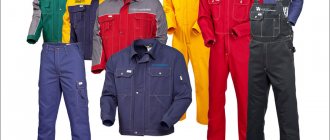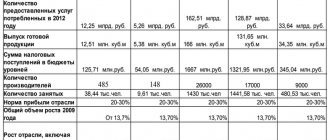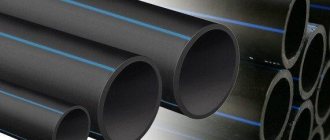How does the printing house work?
We will not focus on any one printing house and will consider general issues. Large circulation orders, such as printing books or magazines, cannot be carried out by home printers. For these purposes, there are universal companies that purchase roll offset machines. Only large printing houses that receive orders in large volumes can afford such a purchase.
Recently, small organizations have become more widespread: offset printing houses and digital showrooms. They usually take on small orders as well. In some cases, such salons may offer designer services.
The seal itself is divided into:
- high - optimal for obtaining thin and clear lines;
- stencil - transfer of an image using a matrix in the form of a grid; there are two types: classic stencil and risography;
- offset - ink transfers from the printing plate to a rubber sheet with an elastic surface, then to the printing medium;
- deep - allows you to make relief images, since the thickness of the paint layer can vary from 1 to several tens of micrometers.
First, a draft is printed on paper to check whether the layout is printed correctly. A metal copy is then made for each page. There is a special printer that prints text not on paper, but on aluminum sheets - photo forms are created. Metal sheets enter compartments where they are wound onto cylinders. The ink adheres to the photo plate and the letters are imprinted onto the rubber cylinder.
Each page passes through four color compartments - black, cyan, magenta and yellow - the combination of these colors determines the color of the picture. After obtaining a full-color image, the pages are cut, folded and stitched in the correct order.
Additional services that a printing house can offer: copying, scanning and large-format printing can be carried out by any user of a personal computer at home.
The work of the printing house should be organized in several shifts.
Services
Main types of services provided by printing houses:
- Printing magazines, newspapers, books.
- Release of booklets. The booklet is a single sheet on which text with illustrations is printed and folded several times.
- Release of brochures. A brochure is a product consisting of more than four pages and containing certain text and graphic information. The pages are fastened together using glue, paper clips, and springs.
- Printing leaflets. A leaflet is usually one sheet of A5 or A4 format containing information on both sides or only one.
- Creating folders. A folder is a product made of either cardboard or polymer, designed to store a small amount of paper. The necessary information is applied to the folder (for example, the customer’s company logo, advertising text, drawings, etc.).
- Issue of labels. Labels are usually made on special paper and are intended for further gluing to a specific object. In the classic version, it contains information about a specific product.
- Making calendars. For example, printing specialists can develop a calendar for a specific company containing its brand name, logo, etc.
- Production of business cards. A business card is a small sheet of thick paper/cardboard on which brief information about a person/organization and contact information is printed.
- Printing on sheets of A1 and A2 format.
- Role print.
The production of advertising products is the least labor-intensive and most profitable area of activity for a printing house.
Additional earning options:
- binding;
- scanning;
- lamination;
- development of corporate logo design;
- development of invitations, greeting cards, etc.;
- production of business printing (for example, envelopes, notepads, forms, receipts, newsletters, etc.);
- printing of methodological and educational materials;
- production of color separated photoforms;
- embossing on paper;
- printing on T-shirts, mugs;
- making souvenirs;
- color proofing of layouts, etc.
In a mini-printing house, the following distribution of the range of products produced is usually observed:
- booklets, leaflets, brochures, labels - about 60 percent of the total turnover;
- copying documents of various formats – 25 percent;
- binding of documents (for example, diplomas, coursework, reports, etc.) – 5 percent;
- lamination – 5 percent;
- other goods – 5 percent.
Printed materials can be replicated in small batches using photocopiers, or in large quantities using a risograph. The possibility of producing goods in a small volume will be of interest to numerous small entrepreneurs when ordering promotional products.
Printing house: writing a business plan
The first section of the business plan is a complete description of the services, as well as an analysis of the target audience, market and competitors.
Let's assume that the printing house will work in the field of color printing, binding and lamination of documents, duplicating printed materials in small quantities.
Will be produced:
- forms;
- newsletters;
- brochures;
- leaflets;
- business cards;
- booklets;
- forms;
- posters (A3).
Consumers of services will be individuals and legal entities who need to perform the above services.
An analysis of competitors showed that there are no similar companies nearby that specialize in duplicating and printing documents. There is one company that produces products in large quantities.
Selecting the type of printing house
What format will the printing house have? A full-fledged printing shop is capable of producing books, newspapers and large paper products, POS materials, large-format printing (wallpaper, canvas).
The mini-printing house serves the needs of individuals: printing photographs, drawings, papers of several formats, business cards, booklets, posters, calendars will cost the future owner a relatively small amount - up to 400,000 rubles or less. A small printing house is focused on fulfilling small orders. Printing of photographs, business cards, papers, gift printing - people often use such services. The format of the printing house is critical, since this will determine the amount of costs.
Registration and design of home printing
Legally, a business is usually registered by registering an individual entrepreneur, since there will be only one founder, the cost of state duty is low, and accounting is easy to do. At the same time, there are no plans to open branches or expand production.
You must obtain permission from the following authorities:
- Fire Department;
- Rospotrebnadzor.
To deduct taxes from staff salaries, you will need to register the company with the employment service and pension fund.
Market description and analysis
Characteristics of the printing market:
- high social significance of the market;
- reduction in the number of state printing houses;
- the market is dominated by small enterprises providing highly specialized services;
- the number of market participants working in new formats – digital and “hybrid” – is growing;
- high competition;
- market players are trying to keep track of technological innovations in the industry, modernize their production and produce their own printed product;
- multi-technology printing enterprises;
- in recent years there has been an increase in the production of printed packaging and promotional products;
- the state is preparing a program to support the printing industry;
- strengthening interaction between small printing houses;
- in 2020, the capacity of the all-Russian market for the production of printed products was approximately 50 billion sheets of prints;
- 2016 is considered a turning point for the domestic printing industry, since most printing houses are experiencing a stage of development of business and investment activity;
- the annual volume of printing in Russia in foreign currency equivalent will be about 6.5 billion dollars (as of the beginning of 2020);
- In cities with a population of over a million, with a population of up to 4,000,000 people, there are 230-300 printing enterprises.
Structure of the Russian printing market by product type for 2020
Total output of printed products in physical terms according to Rosstat nomenclature in the first half of 2015-2016
Distribution of enterprises by type of ownership in Russia (printing production)
Structure of production of printed products for industrial and technical purposes in Russian regions in 2020
The target audience
Potential consumers of printing services:
- commercial organizations that need advertising products, forms, forms, newsletters, labels, packaging, etc. (about 60 percent);
- non-profit organizations (for example, charities) that also need advertising booklets, brochures, folders, notepads, calendars and other products (about 10 percent);
- individuals (about 20 percent);
- schools, higher and secondary vocational educational institutions, etc., in need of publishing manuals, textbooks, manuals, etc. (about 15 percent).
Competitive advantages
Success factors of modern printing:
- performing the service on time;
- providing the opportunity to provide services in a shorter period of time;
- wide range of services;
- provision of unique services (for example, effective advertising, labeling and packaging products; the use of metallization effects; three-dimensional images; aromatic printing);
- modern and high-quality equipment;
- own informative website, pages on social networks;
- accepting payment in various ways;
- well-thought-out loyalty program;
- qualified service;
- possibility of printing products in small quantities;
- reasonable prices;
- high quality of finished products.
Advertising campaign
List of promotional events for a printing company:
- adding information about the company to city reference publications;
- advertisements in local print media (eg, magazines, newspapers);
- development of a corporate website with the ability to calculate the cost of services of a printing company, taking into account circulation, size, color;
- opening your own group on social networks;
- at first, you can carry out promotions (for example, a discount on the first order, when ordering over a certain amount, etc.);
- exchange of promotional materials with various companies (for example, advertising agencies, notary offices and courier services);
- advertisements in public transport (for example, metro and buses);
- a bright sign and banner with a list of services provided;
- cooperation with advertising agencies who, working with their clients, will order the production of advertising products in our printing house;
- unobtrusive offer of company services over the phone.
Equipment for mini-printing houses
Equipment for operational printing should be relatively cheap, easy to use and low cost of maintenance. We’ll look at how and what to equip a mini-printing house in this section. The workhorse is the typewriter - the risograph.
It is wise to choose a risograph because it:
- provides high printing speed;
- works with A6-A3 formats;
- large resource of work;
- low power consumption (which is important for a small printing house).
It is advisable to buy new machines, since used machines may not satisfy all customers. To cut products, you will need a cutter that could cut stacks of paper into several hundred sheets.
You need to approach the choice of equipment wisely: you should not order from unverified manufacturers or sellers from China. Sometimes there may not be a specialist nearby who could repair the equipment in a short time. And delay means losing customers.
To make business cards or brochures, you may need a laminator.
To scan documents and create copies (and these services are often used by printing houses), you need to purchase a scanner or copy machine. A color laser printer allows you to print documents at high speed.
In addition to printing equipment you will need:
- computer;
- copy frames;
- folding and binding machine (binder);
- telephone;
- stapler
| Name | Cost, rub |
| Risograph | 200 000 |
| Cutter | 50 000 |
| Laminator | 5 000 |
| Scanner | 150 000 |
| Copy frame | 150 000 |
| Computer | 20 000 |
| Bookbinder | 15 000 |
| Telephone | 5 000 |
| Stationery | 5 000 |
| Total | 600 000 |
Printing room: what is worth considering
A mini-printing house will require a non-residential premises measuring 50 -70 sq.m.; if desired, it can be located in a smaller area. The production facility must have ventilation and electrical wiring of more than 280 W, and common areas for employees. An important point is convenient access roads, including for freight transport, since in the case of fulfilling large orders, as well as purchasing raw materials, loading and unloading operations will need to be performed.
It is good when the printing house is located in central areas and near educational institutions, but this is not necessary - it all depends on your target customers, as well as the presence of direct competitors nearby.
Orders should be accepted in a specially equipped place where you can demonstrate finished products, paper samples, binding examples, etc. to customers.
There should also be a place for storing finished products.
Modern equipment is very compact, but it also requires space.
Employees' workplaces. For the work of a designer (layout designer), you will need a dedicated place with a computer, as well as for a sales manager (a desk with a computer and a telephone).
Room and furniture
In addition to purchasing equipment, you must:
- Space for printing equipment. In addition to the working area, the premises will be equipped with warehouses for storing finished products and raw materials. In such a printing house, you can combine the office and production in one room. The cost of renting such premises is 30,000 rubles per month;
- Purchase of raw materials : paints, plates, paper - approximately 200,000 rubles.
The printing house must be equipped with powerful ventilation and reliable electrical wiring, since the load on the network will be constant. It is better to zone the premises into the place where orders are received, the printing house itself and the warehouse.
The location of the printing house is important as it will ensure a constant flow of customers. It is logical to choose premises in a business center or educational institution. If it is not possible, organize work in a residential building near educational institutions and offices.
You will also need furniture:
| Name | Amount, rub |
| Table | 20 000 |
| Chairs | 10 000 |
| Sofa for clients | 20 000 |
| Cabinets | 20 000 |
| Desk lamp | 6 000 |
| Total | 76 000 |
Risks when opening a printing house and common mistakes that novice entrepreneurs make
The basis of a successful business is correct calculation and justified risks. Purchasing equipment is the first step, which can cause unexpected expenses. It is important to calculate the power of the equipment. When the workload is high, low machine productivity can cause orders to be unfulfilled. At the same time, the unjustified purchase of expensive equipment in the absence of a sales market will bring a lot of headaches to the business owner.
How can you save on printing equipment?
Purchasing used equipment.
Pros: price.
Cons: Requires technical knowledge.
Purchasing Chinese devices on Aliexpress, Alibaba.
Pros: price.
Disadvantages: risk of contacting a dishonest supplier, long waiting period, additional costs for delivery within Russia, low quality of equipment, limited service life.
Hiring
The following employees are needed to operate the printing house:
- designer - salary 40,000 per month;
- Copier operator - two employees working in shifts - 40,000 rubles;
- Cleaning lady - 18,000 rubles;
- Bookbinder - 20,000 rubles.
Let’s assume that the accounting department is outsourced, and the entrepreneur himself performs the function of order receiving manager . Total personnel costs will be: 118,000 rubles.
How to choose a supplier
At the start, choose equipment that has already been used. The main thing is to check the build quality and the availability of all necessary documents and guarantees.
New high-quality equipment costs a lot of money, so gradually replace outdated equipment as your business develops - include depreciation costs in your plan.
To start a business, basic equipment is enough: a printer, scanner, risograph, copier, varnishing machine or laminator.
Order consumables (for example, paper and ink) through online stores - the markup will be minimal, and for bulk orders suppliers often give a discount.
When choosing a supplier, pay attention to the following points:
- Check for a quality, informative website
- Check the availability of certificates and guarantees for the product
- Make sure the supplier is reliable (read reviews of cooperation)
- Check out the loyalty system: discounts may depend on the volume and frequency of orders.
Fixed expenses
Renting premises, updating/repairing equipment, taxes and employee wages will make up the bulk of the printing house’s fixed costs.
| Expenses | Sum |
| Renting premises | 30,000 rubles |
| Buying paper, paints | 100,000 rubles |
| Salary | 118,000 rubles |
| Total | 248,000 rubles |
Fixed expenses also need to include Internet services, depreciation deductions to various funds, utility bills, and expenses for unforeseen circumstances.
Description and characteristics of equipment and services provided
Equipment characteristics
- The GR2700 risograph makes it possible to implement complex design solutions and at the same time has ease of communication. Format-A4.
Printing speed – from 60 to 130 copies/min.
Scaling – from 50 to 200%.
Designer tablet.
First copy time – 17 p.m.
Master film service life – from 4000 to 5000 copies
- Copier Minolta EP 1050 Format-A3.
Printing speed (for A4) – 15 copies/min.
Scaling – from 50 to 200%.
First copy time – 60 sec.
The service life of the photodrum is from 100 thousand. up to 120 thousand copies
Toner service life – 3000 copies.
- Laser printer EPSON EPL-9000. Format-A3.
Printing speed (for A4) – 8 pages/min.
The service life of the photoconductor and toner cartridge is 6500 pages.
- Computer with Pentium PI66 processor.
CD ROM.
Monitor 17.
RAM (Random access memory) – 32 Mb.
HDD (Hard disk drive) – 2 Gb.
Monitor 17.
- Computer with a 486 DX4-100 processor.
RAM (Random access memory) – 16 Mb.
HDD (Hard disk drive) – 1 Gb.
CD ROM.
Monitor 15.
- EPSON GT-9000 scanner.
Format – 216 x 279 mm.
Scaling – 59%-200% in 1% increments.
Features – the ability to directly transfer images to the printer; full-color scanning in one pass.
Marketing plan
Advertising campaigns can be carried out using the media, as well as through outdoor advertising, banners and flyers. You can advertise in newspapers. In addition, advertising on social networks with periodic sweepstakes and promotions works well.
Over time, marketing promotion is planned: calling clients to offer printing services.
It is not necessary to do this at the start, but in the future it is also worth launching your own printing house website. The cost of this service is about 150 - 200 thousand rubles. The site should contain information about the services provided, prices, special programs, and printing house bonuses.
Registration
To legalize your business, be sure to register your business. A license is not required for these services, and individual entrepreneur registration is possible. But when planning to expand your production in the future, if your business is for a long time, it is best to open an LLC. In this case, you will be able to work with any number of clients with the conclusion of contracts for various amounts.
To do this, you will have to go through the registration process and collect the necessary documents. Be sure to choose the OKVED code correctly. For advertising the code is 74.40, for printing activities - 22.22. If you do not have your own premises, you can rent it. Professional equipment can also be either purchased or rented. If you are on a budget, you can purchase used appliances. Find qualified employees. And think through your advertising campaign well.
Payback of a printing business
The payback period for a printing business depends on many parameters, so it is quite difficult to calculate them. It will take about a year to develop the technology and coordinate the work of the printing house and the receipt of orders.
Until orders are generated, there will be no stable income. For the first year you will not have to invest a lot of money, as at the start of a business, but the work will be without profit or with insignificant profit.
The payback period for a business, subject to the development of a client base and coordination of work, is 2-3 years. If the printing house is successful and orders come one after another, the payback period will be reduced to a year.
Specifics of the printing business
Of course, the best option would be for the future owner of the printing house to know its specifics and special education. But if you have chosen this particular type of business, but don’t understand anything about printing itself, you need to correctly select qualified personnel, and everything will work out for you. You will be required to make organizational decisions.
Printing services are in demand at any time of the year. The profitability of your business will depend on the cost of your products, their quality and your customer base.
Focus on regular customers - this is the right strategy. And then you will have regular orders. And when drawing up a business plan for your enterprise, develop a policy of cooperation with your potential clients, who should become regular ones.
Evaluation of work results
Printing services are very diverse, so there is no single criterion for assessing the quality of work.
You can perform the following tasks:
- printing documents;
- creating copies;
- lamination;
- binding.
To develop a client base, you need to create a portfolio with examples of work from the very beginning. Orders for small volumes of work are accepted in the presence of the customer, which will also increase the level of confidence in the printing house.
The main thing is to focus on the speed of order fulfillment and at the same time on the quality of the products.
Market assessment
Potential buyers of printing and copying services are individuals and legal entities who need the production of forms, forms, newsletters, leaflets, advertising brochures, etc. spectra, as well as urgent and non-urgent production of copies of printed materials in A3 and A4 format.
OOO intends to attract orders from schools and universities that have a need to provide students with methodological and educational materials.
Our company occupies a favorable territorial position in Moscow. Our short distance from the city center makes it easy for residents of almost the entire city to contact us. At the same time, the location of the company outside the central part of Moscow allows us to save significant amounts on lower rent for premises rented by our company.
The absence of nearby firms providing services of a similar level will ensure an influx of all potential buyers of printing products in this area.
It is necessary to note that next to our company there is a notary office, whose clients often have to copy the necessary documentation. For this purpose, it is proposed to organize outdoor advertising and a colorful sign. The advantages of this type of advertising are low cost and coverage of a wide audience. You can also consider setting up a 24/7 digital printing center, but this will cost a little more.
Marketing
It is usually quite difficult to find first clients. Use any methods: telephone calls to all companies and organizations that may need printing services, personal visits to managers. It is very important to prepare product samples, create a booklet with design templates, colors and a demonstration of paper quality. Study the work style of your closest competitors and highlight your advantages.
Advertising should be placed in print publications and on various platforms on the Internet. Your banners and advertising signs should be present near the most popular establishments. Provide a wide range of services: scanning, binding, photocopying, laminating, high-quality and affordable color printing services.
Offer your services to educational institutions. The production of methodological and educational aids and visual materials in any volume will not only bring profit, but will also allow you to gain a reputation as a serious company. Make commercial offers to all organizations in the city - printing of forms, brochures, newsletters, various forms for document preparation, as a rule, is ordered in large volumes.
Always complete orders on time and with the highest quality. Offer reasonable discounts based on print volumes. Few offer a wide range of services. If you can provide customers with a variety of options, this will be a significant advantage. Offer modern services - printing on clothes and mugs also brings in good income.
Advantages and disadvantages of business
Business benefits include:
- demand;
- does not require large areas;
- pays for itself relatively quickly with a large customer base;
- can be combined with running any other business.
Disadvantages: strong competition in this area.
The printing business is in demand among employees of business centers and students of various forms of education. Setting up a home printing shop is not too difficult or expensive; if you have clients, the initial costs will quickly pay off. It is important to provide for all the nuances so that orders are completed quickly and efficiently.
Purchase of goods and consumables
To operate a copy center, you will need to purchase materials for equipment, as well as office supplies for sale. As consumables, you need to stock up on office paper, since it is consumed the most. You should also purchase a spare cartridge. If one runs out of ink, you can quickly replace the cartridge and resume work. The cost of consumables will be about 25 thousand rubles.
The goods you should choose are the simplest and most common: paper, files, document folders, pens, paper clips, notebooks, etc. The purchase of stationery should be done in the amount of 30-40 thousand rubles. Stationery is a durable product and can be stored for a long time. So you won't lose your investment if sales are low. You will make a large purchase once, and then you will update the assortment in accordance with sales. Add to the list everything that customers often ask, take their wishes into account when creating an assortment.
Risks of a copy center as a business
When planning any business, you need to take into account the risks that may be associated with it. The main difficulties in the work of a copy center are:
- poor choice of location;
- overpriced services;
- low print quality, which leads to a reduction in orders;
- low speed of service;
- lack of demand;
- equipment breakdown.
The profit of a copy center depends on the right location and quality service. To avoid risks, you need to carefully analyze the location where you plan to locate your center. The next step is to choose high-quality equipment with high productivity. By taking care of these two factors, you can provide good service and attract many clients.











